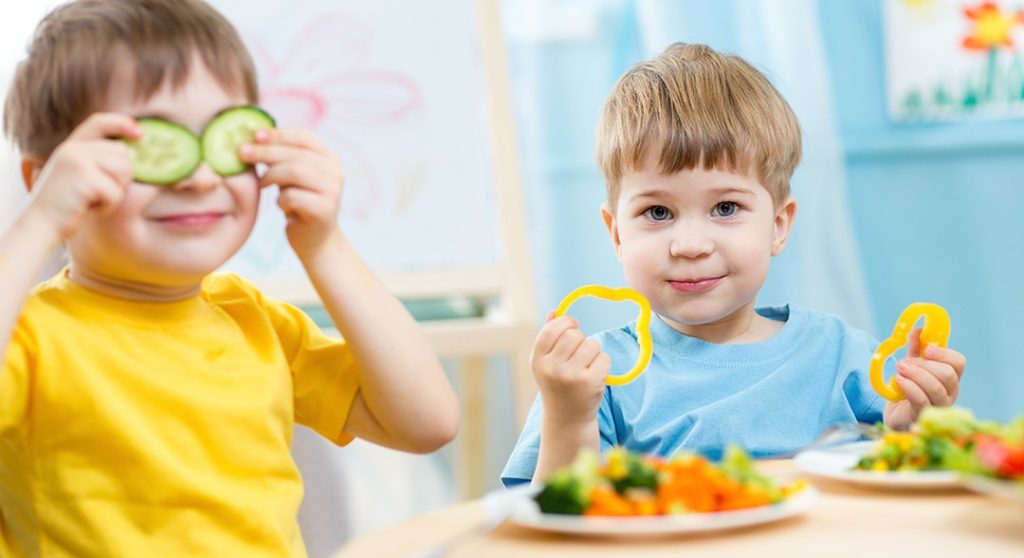Cooking and preparing food
April 28, 2022

Cooking can help children learn
Children love to learn alongside others; they like to feel grown-up and have a go at safe adult tasks around the home. As a young apprentice, children can learn at their own pace supported by the adults around them. When children make mistakes, they can also be helped to see their challenges in a positive light. It’s vital that children feel that if they make a mistake they can get up and have another go; perseverance is a key to success and an attribute to be cultivated.
Children ‘learning alongside others’ is all about:
- Being shown how to do something. Talking through the process together. Having a go themselves, then…not quite getting it right! Being helped to try again, then…succeeding!
The young child’s day is driven by necessary routines, such as bath time, brushing teeth, dressing, play time, bedtime routines and meal times. These routines present grown-ups with everyday opportunities to encourage their child to explore the world alongside them.
Talk about food
Meal and snack times naturally play a central part in the young child’s world and are ripe for exploring issues such as:
- Where foods come from.
- Healthy eating.
- Introducing new foods in an exciting way.
- Planning and preparing foods.
Young children love to be involved in the planning and preparation of food. It might seem mundane to us adults, but it opens up a whole new world to the developing child.
Jobs young children can do
There are opportunities for children to help with:
- Making lists for shopping (using pictures).
- Choosing recipes.
- Understanding which foods are good for them.
- Naming foods.
- Appreciating where foods are grown.
- Weighing food.
- Stirring and mixing foods.
- Understanding that some foods need to be cooked.
- Preparing foods.
- Learning how meals can be presented at meal time.
- Understanding the importance of washing hands and hygiene with food.
- Food shopping.
Let’s go shopping!
Going shopping together for food is an opportunity for children to start learning about names of different foods, where they come from, prices and quantities.
Engaging children in the shopping process as much as possible can even help relieve the boredom for you. Perhaps children can help make the shopping list ahead of time – just drawing pictures or cutting and pasting pictures of foods from magazines onto cards (rather than writing the words) and then looking out for them on the shelves can turn out to be great fun for young children.
Once home, children can begin to help store away the food shopping in the correct places. Then, when mealtime preparation begins, children can help to find packets and tins, for example, from the correct places. Again, an apprentice-style of learning by watching grown-ups and copying is delightful for young children and a source of genuine educational experience for them.
Meal times are social times
Meal times can serve to help join the child and adult world together. It’s a time where both grown-ups and children can share food and share their experiences of the world with each other. This is an opportunity for children to learn how to behave in social settings; the give and take of conversation; to learn to behave in a social group and to begin to be mindful of other people’s ideas and needs. Again, children are learning alongside others about social interaction.
Variety is the key
At an early age, children can be encouraged to choose a variety of foods to help ensure that they obtain the wide range of nutrients they need to stay healthy.
Children can be exposed to a range of foods in fun ways. For example, children can be encouraged to start:
- Looking at pictures of meals and foods in magazines.
- Reading simple recipe books with grown-ups.
- Pointing out different colours of foods.
- Encouraging them to notice different textures and tastes.
- Becoming a chef.
Children like to role-play and becoming a chef (perhaps just by wearing an apron and hat) can set them off on the right track. Children can learn alongside adults to appreciate foods and enjoy the preparation time together.
With help, young children can start:
- Using a rolling pin for pastry-making.
- Buttering bread and rolls.
- Cracking eggs and learning how to separate whites from yolks.
- Rubbing in butter and flour.
- Decorating – using a variety of toppings on puddings and cakes.
- Using biscuit cutters.
- Greasing cake tins.
- Using a sieve.
- Grating carrots or cheese.
- Cutting fruit with a non-sharp knife.
Together, grown-ups and children can record their efforts using a camera or by drawing pictures. You could compile a ‘My Cook Book’ with cuttings from magazines and their own photos of the food you have both prepared together.